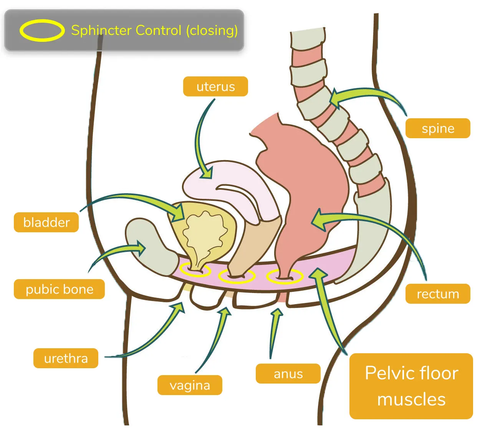Pelvic Floor 101: Everything you need to know about the pelvic floor

What is the pelvic floor?
First things first, what is the pelvic floor? The pelvic floor is the muscular sling that supports the major pelvic organs (including the bladder, bowel, vagina, and uterus) and maintains the everyday functioning of the bladder and bowel.
It has two primary functions:
- Sphincter control: Contracting the pelvic floor muscles closes the urinary and anal sphincters, allowing continence to be maintained. Relaxing the pelvic floor muscles opens the urinary and anal sphincters, allowing for voluntary urination and defecation. This function is important for good sexual health.
- Pelvic organ support: The pelvic floor muscles, ligaments, and connective tissues are vital to regulating intra-abdominal pressure and supporting the pelvic organs in the correct positions to prevent prolapse.
What are pelvic floor disorders?
Pelvic floor dysfunction occurs when the pelvic floor is injured or weakened. Pregnancy and childbirth are significant contributors to pelvic floor weakness, along with increased body weight and advanced age. Improper body mechanics and impaired breathing can also contribute to uncoordinated, tight or weak pelvic floor muscles. Pelvic floor disorders are often associated with urinary incontinence, reduced sexual arousal, and pain during intercourse.
How can you prevent pelvic floor disorders?
The quick solution to preventing pelvic floor dysfunction is to maintain a strong pelvic floor. As long as the pelvic floor is strong and the muscles are activating appropriately, it will function well.
Unfortunately, it's not possible to see muscle atrophy of the pelvic floor before the symptoms begin. Therefore, the first symptom of a weak pelvic floor can be small leaks of urine when sneezing or laughing. This indicates that the closing function of the pelvic floor is not working as well as it should. The pelvic floor must be strengthened to improve its control of the urinary and anal sphincters. Strengthening the pelvic floor with appropriate guidance and feedback is the best way to maintain pelvic health.
